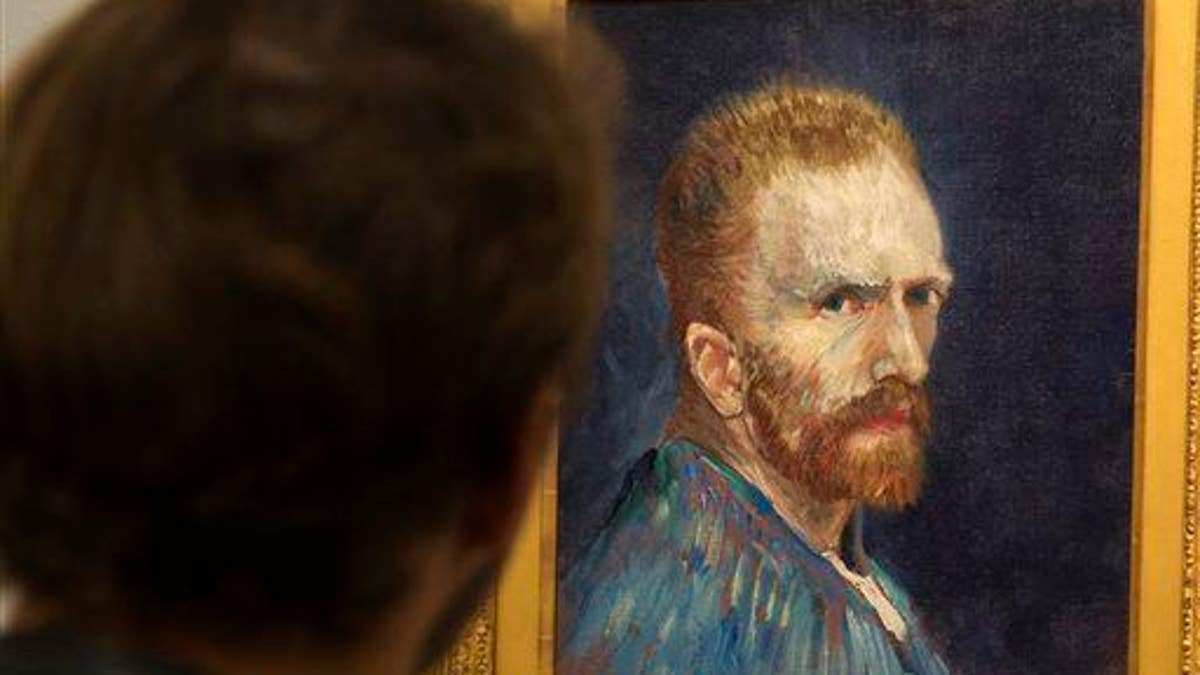
A patron looks at a self portrait by Vincent Van Gogh at the Museum of Fine Arts, Tuesday, Oct. 7, 2014, in Montreal. (AP Photo/The Canadian Press/Ryan Remiorz)
Look at a Van Gogh painting today, and you're not quite getting the full effect. Reports in 2013, as cited in the Guardian, revealed that the paintings were fading; studies have found yellows are turning brown.
The color red is also posing a problem in works like Wheat Stack Under a Cloudy Sky, and researchers are now moving closer to finding out why, Chemistry World reports.
Van Gogh often used a pigment known as red lead. The stuff, also called minium, turns whiter when it's exposed to light. Seeking to understand the process, researchers analyzed a tiny dot of paint from the work.
The process, which involved shooting X-rays at the paint, showed that the red lead is now covered with what Chemistry World calls "degradation products" in the form of other chemicals.
The researchers found a substance they call the "missing link" in the degradation process: It's a mineral lead known as plumbonacrite, Hyperallergic reports. Light shining on the plumbonacrite has apparently caused the buildup of other chemicals.
Interestingly, as Hyperallergic notes, the researchers say plumbonacrite has never before been reported "in a painting dating from before the mid 20th century." Of course, the color issues actually make Van Gogh's work even more impressive, Jonathan Jones wrote in the Guardian:
- "In the end, the fact that some of Van Gogh's colors have changed over the years is simply a homage to his genius. No one, after all, has any complaint about his colors."
Last year, Van Gogh—or rather, his "regrown" ear—made some unusual headlines.
This article originally appeared on Newser: Van Gogh's Reds Aren't What They Used to Be
More From Newser




















